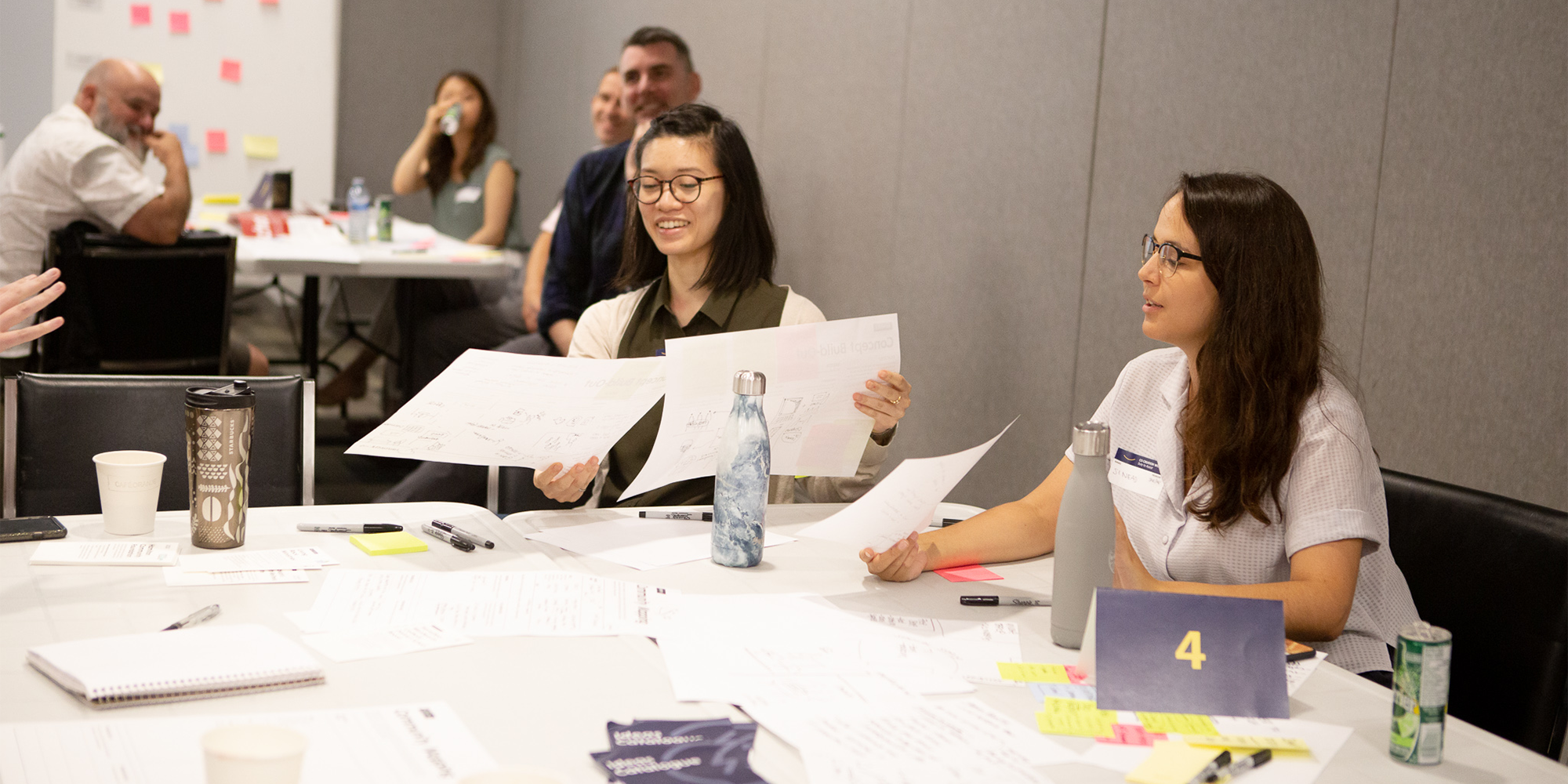
Shifting perspectives: A co-creation workshop
Author

- Mirusha Yogarajah
- Project Journalist
|
What happens when you gather together case managers, frontline workers, teachers, professors, and other stakeholders in one room to co-design services to prevent youth homelessness? A lot of magic. The session, “Shifting Perspectives,” was part of a 14-week social innovation project we’ve been working on in partnership with Making the Shift, co-led by A Way Home Canada and the Canadian Observatory on Homelessness. The session was designed to help participants adopt a new perspective on designing and delivering homelessness services based on the principles of Duty to Assist, a rights-based homelessness prevention model based on legislation that is proving successful in Wales. Duty to Assist requires that service providers address the needs of young people “upstream,” or before they become homeless. It also means professionals who interact with young people on a regular basis have a legal duty to assist if they suspect a young person is at risk of or is currently homeless. As we’ve learned through our research this summer, adopting the principles of a Duty to Assist type of legislation means moving from a reactive, or crisis approach, to a preventative mindset when it comes to ending youth homelessness in Canada. The session brought a diverse group of people involved in the homelessness sector to the table (or tables, in our case) and provided participants with an opportunity to share their experiences and stories in support of finding solutions to youth homelessness. Participants from Youth Reconnect, which provides early intervention services to prevent young people from becoming homeless; Living Rock Ministries, a safe place of community and support for youth at risk; and many more organizations attended the session. An array of innovative ideas were presented after the workshop participants completed three activities. Clearly, our participants knew what was needed. Each table was presented with a scenario occurring in a school context. For example, one group’s scenario was “no one noticed I wasn’t there” and included details about how a youth was not noticed when they missed class by their teachers and when they were in class, they had a difficult time staying awake. Each scenario listed the core needs of the youth involved and the barriers they faced. Participants reviewed the scenarios and browsed through the Ideas Catalogue—a collection of programs and services offering ideas and inspiration for participants to draw from for their proposed designs. Participants were then asked to individually generate ideas to address youth needs and write down as many as they could on sticky notes. The participants shared their ideas with the rest of the group and placed their sticky notes on a large whiteboard under the categories people, training, technology, and other. For the second activity, participants delved into the ideas they generated and built out concepts they had with the help of a concept template. They provided a description and listed how it met youth needs and benefited youth. They also sketched out what using the program or service would look like. Following that, participants completed a community mapping template. This template asked participants to choose three community partners from among 25 community partners cards. They were also asked to describe roadblocks to their concept and workarounds. One team’s idea was a Youth Hub co-created by youth that would be located in schools so that youth can receive access to a safe space and be introduced to services beyond guidance. The centre would have a coordinator and a navigator to schedule and connect services. This Hub could also help build trusting relationships between students and staff and incentivize attendance in schools. The staff would be flexible, organized, professional, empathetic, and “look like” youth. Youth would create and evaluate the success of the Hub. The group proposed that they partner with the Hamilton-Wentworth District School Board, Hamilton-Wentworth Catholic School Board, Social Planning & Research Council of Hamilton, and Good Shepherd. In terms of roadblocks, some participants were concerned that there would be no funding to make this concept a reality. To get around this, they suggested planning the project directly with service providers so they could see the benefits of investing in a project like this. Another team created a program to provide youth with flexible alternatives for education that meet them where they are. This is because some youth may learn better in settings other than schools and may also be interested in working and making money while receiving school credit. These are all alternatives that should be offered to students to make sure they are continuously engaged in ways that address their needs and desires while ensuring their ongoing learning. The group proposed partnering with Hamilton-Wentworth District School Board, the Wesley YWCA, and the Threshold School of Building to make this program a reality. Another group presented an inclusive space toolkit for distribution to Hamilton schools intended to promote positivity around Indigenous identity and to develop relationships with other youth and with staff. They were inspired by a Safe Space Kit for LGBTQ2S students in the Ideas Catalogue. The toolkits would include a training guide to embed culture into schools and develop a physical space for students and allies. It would celebrate different identities, meet youth where they are, and create community. The team proposed that they join forces with the Hamilton Regional Indian Centre, the Hamilton-Wentworth District School Board, Hamilton-Wentworth Catholic School Board, and the City of Hamilton. Frontline workers and other stakeholders in the homelessness sector have inspiring ideas that they’ve been thinking about for years. This session was a great way to learn about their knowledge and experiences. The Designership team is looking forward to taking elements and features from each of the concepts and building more robust prototypes that bring the principles of Duty to Assist to life. On deck: We’ll be doing lots more prototyping over the next week and preparing a second design jam with young people with lived experience of homelessness and front line workers. |